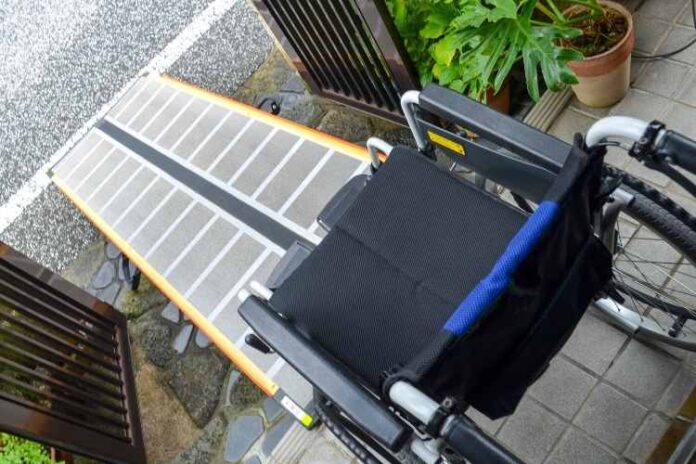3.6 million Americans with travel-limiting disabilities can’t leave their homes because they are disabled or housebound.
It doesn’t matter what reason it is. Sometimes, people need a wheelchair ramp. Ramps are useful for accommodating a loved one or for some physical limitations.
It turns out there are many considerations that you need to think about. One of these considerations is the slope of a wheelchair ramp.
Not sure what we mean? Looking for some help understanding the wheelchair ramp slope? Then you’re in the right place–keep reading for complete essentials on this important topic.
Proper Wheelchair Ramp Slope Measurement
When building a wheelchair ramp, the angle or slope is an essential factor. A too steep ramp may be difficult or even impossible for some wheelchair users to navigate. On the other hand, a too shallow ramp may be too gentle for users and limit the speed at which they can travel.
The standard ramp slope measurement for a wheelchair ramp is a 1:12 ratio, which means that for every inch of rising, the ramp should have a 12-inch run. This ratio provides a gentle slope that is safe and easy to navigate for wheelchair users.
Another way to think about it is that the ramp should have a slope of no more than 5 degrees. A 5-degree slope is about the same as a 5% grade.
The Proper Ramp Design
There are three primary measurements to consider when designing a wheelchair ramp. These are the rise, the run, and the width.
The rise is the vertical distance from the ground to the top of the ramp. Then, the run is the horizontal distance from the edge of the ramp to the doorway or other point of entry. Furthermore, the width is the distance from one side of the ramp to the other.
Ramp design must also take into account the friction between the wheels of a wheelchair and the ramp surface. A ramp with a slick or polished surface may be difficult or even dangerous to use, while a ramp with a rough or textured surface may be more difficult to maneuver but will provide more traction. It is also essential to ensure the ramp is long enough to safely allow the user to get up or down the incline.
When designing a ramp, it is essential to strike a balance between a slope that is too steep and one that is too shallow. The best way to do this is to consult with wheelchair ramp contractors who can assess the user’s specific needs.
Total Usable Width
It is the width of the ramp itself, plus the width of any handrails that may be present. The total usable width of a wheelchair ramp must be at least 36 inches wide to accommodate a wheelchair or other mobility device, as well as a person walking next to the wheelchair user.
Have the Right Wheelchair Ramp Slope Ratio
If you need a ramp for your home or business, make sure to consult with a professional to ensure the perfect fit. The angle of the wheelchair ramp slope is essential to people in wheelchairs or with mobility issues and must be considered for the safety of all parties involved.
Visit our blog for more tips and advice on home and business improvements!


